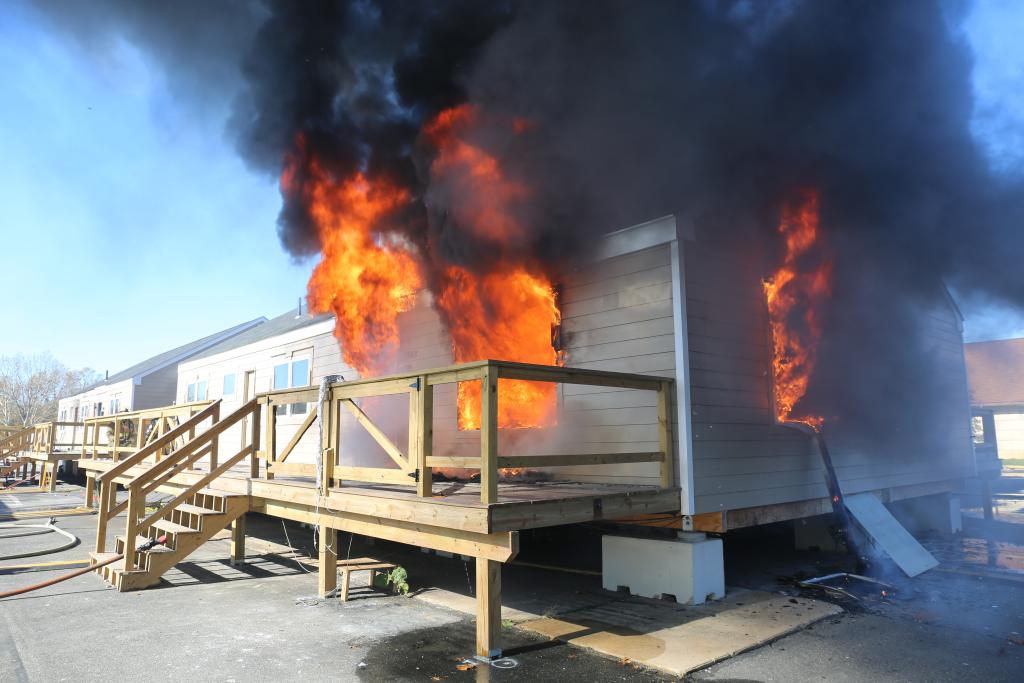
Report Series and Tactical Considerations Released on the Analysis of Search and Rescue Tactics in Single-Story, Single-Family Homes
The ‘Study of Fire Service Residential Home Size-up and Search & Rescue Operations,’ was funded through a grant from the Department of Homeland Security (DHS) Federal Emergency Management Agency's (FEMA) Assistance to Firefighters Grant (AFG) Program under the Fire Prevention and Safety Grants: Research and Development (EMW-2017-FP-00628) with the objective of examining size-up and search & rescue tactics on the residential fireground. Twenty-one experiments were conducted in two identical, purpose-built, single-story, single-family residential structures.
Eleven experiments examined bedroom fires, eight experiments examined kitchen fires, and two experiments examined living room fires. Across this series of experiments, the impact of isolation of fire and non-fire compartments, the timing of search actions relative to suppression actions, and the influence of isolation, elevation, and path of travel during rescue were examined with respect to firefighter safety and occupant tenability. These experiments resulted in a three-part fire service technical report series that you can find by clicking the following links. For more information on each of the reports, check out the high-level overviews below.
I. Bedroom Fires
II. Living Room Fires
III. Tactical Considerations
Analysis of Search and Rescue Tactics in Single-Story Single-Family Homes Part I: Bedroom Fires and Part II: Kitchen and Living Room Fires
The focus of these reports is to provide a detailed description of the experimental structures, experimental procedures, instrumentation used, and fuel packages. Fire dynamics-based descriptions of each of the eleven bedroom experiments (Part I), and eight kitchen/two living room experiments (Part II) are included. These descriptions are based on the changes in the measured quantities (e.g., temperature, gas concentration, heat flux, etc.) throughout the structure with respect to opening/closing doors, venting windows, and/or suppression. Finally, the changes in fire dynamics are assessed across the different experiments to examine the impacts of tactics. The data is analyzed in terms of toxic gas and thermal exposures to firefighters and potentially trapped occupants over three different intervals:
- Prior to fire department intervention
- During search operations
- During rescue operations
Analysis of Search and Rescue Tactics in Single-Story Single-Family Homes Part III: Tactical Considerations
The focus of this report is to provide evidence-based insights in the form of tactical considerations to the fire service. The report uses the data analysis performed in Part I and Part II to generate nine tactical considerations. Firefighters can leverage these considerations regarding pre/during/post-suppression search and rescue tactics along with their current training and experience to increase their efficiency and effectiveness on the fireground.

